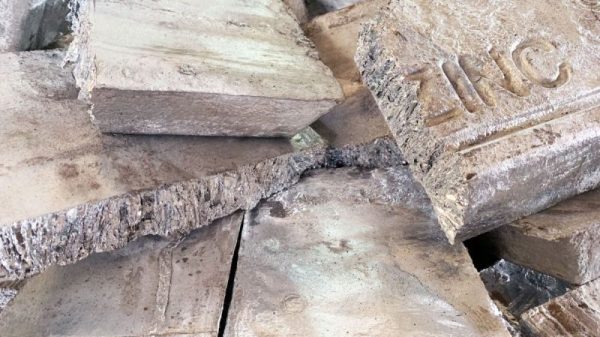Guns swinging from their hips, two soldiers in black combat boots and green tactical clothing appear to wire explosives to pumps at the Canada Water reservoir in Rafah, southern Gaza.
Moments later, an orange blaze tears through the critical facility in the Tal al-Sultan neighborhood, as ribbons of grey smoke erupt into the sky.
The reservoir could hold 3 million liters of water and was central to the treatment and distribution of water in the Rafah Governate, according to the UN’s Office for the Coordination of Humanitarian Affairs (OCHA), providing water for 150,000 people prior to October 7, when the war began.
It added that it examines reports of videos posted to social media and handles them with disciplinary measures. The IDF said the incident was under review by the Fact Finding and Assessment Mechanism, “an independent investigative mechanism outside the chain of command entrusted with investigating exceptional events in warfare.”
There have been many water facilities damaged or destroyed by Israel’s 10-month-long assault in Gaza, according to the UN and various other international bodies, compounding the civilian population’s suffering, risking the spread of disease and leading human rights experts to accuse Israel of using water supply as a weapon.
“IHL is meant to protect against indiscriminate attacks on the civilian population or the objects they depend upon (for) survival,” he said.
Even before the controlled explosion in late July, the Israeli siege drained fuel and electricity supplies needed to power the Canada Water reservoir and other water systems in the city, according to Rafah’s mayor, Ahmed Al-Sofi, causing severe shortages.
The amount of water available in Gaza works out at 4.74 liters of water (1 gallon) per person per day, Oxfam reported in July, adding that this is “just under a third of the recommended minimum in emergencies and less than a single toilet flush.” The international nonprofit has accused Israel of using water as a “weapon of war,” saying Palestinians in Gaza have “almost no water to drink, let alone to bathe, cook, or clean.”
Extreme summer heat in Gaza is making a desperate shortage of water even worse for Palestinians already stalked by famine and struggling with repeated displacement.
Israel’s war in Gaza has reduced supplies of fuel, chlorine and spare parts, stifling water production, purification and sewage pumping, according to the UN. Around 70% of all water and sanitation facilities in Gaza have been destroyed or damaged, the WASH Cluster, a United Nations-led group that coordinates humanitarian efforts for water, sanitation and hygiene, said on July 24, citing satellite analysis from the UN Satellite Centre.
More than 1.7 million cases of infectious diseases have been recorded in Gaza, according to the Ministry of Health there. Traces of the highly infectious polio virus – transmitted through faeces, and contaminated water or food – were found in a 10-month-old child in the central Gazan city of Deir al-Balah earlier this month. World Health Organization (WHO) testing discovered the virus in sewage samples in Gaza in July, putting thousands of Palestinians at risk of contracting a disease that can cause paralysis.
After the Gaza Ministry of Health declared a polio epidemic last month, the WHO warned that ongoing Israeli bombardment had stifled vaccination efforts in Gaza. They are now calling for a halt to the fighting to allow for an effective vaccination drive.
Widower Alaa Riyad says he treks many miles every day under the glare of the sun to collect water for his family, in Beit Lahia, northern Gaza.
Israeli attacks in the strip have killed more than 40,200 Palestinians and injured about 93,000 since the war started, according to the Ministry of Health in Gaza. The Israeli military launched its aerial and ground assault in Gaza after the militant group Hamas attacked southern Israel on October 7, killing around 1,200 people and abducting more than 250, according to Israeli authorities.
‘Near complete destruction of all water infrastructure’
Gaza’s water crisis has been building for decades. In 2017, the UN’s children’s agency, UNICEF, said that 95% of water from Gaza’s sole aquifer was “unfit for human consumption,” due to over-extraction, seawater infiltration and sewage contamination.
In 2021, about 90% of Gaza’s water came from groundwater wells drawing water from that aquifer, according to the Palestinian Water Authority. The remaining 10% came mostly from desalination plants and Israel’s national water company, Mekorot, via three pipelines.
“What we’re seeing so far… is the near-complete destruction of all water infrastructure, which includes water pumping stations, water wells, the whole piping system in Gaza,” Zwijnenburg said. “The few functioning pumps that are still operating, the quality of the water is so bad… (But) people have no choice but to drink it.”
Within the first week of the war, Saaed Al-Madhoun, an emergency response manager for the humanitarian agency CARE International, was forced to flee an Israeli incursion with his family near their home in Gaza City, which was later flattened by bombardment.
The aid worker is haunted by “constant fear and uncertainty,” as the threat of Israeli attacks loom over his wife and five children, aged between 1 and 13 years old. They are displaced in miserable conditions in Deir al-Balah, where the entire family survives on just 20 liters of water per day – less than the minimum of 3 liters per person needed for survival, according to UNICEF.
‘Completely miserable’ conditions in tent camps
The Israeli offensive has displaced up to 1.9 million people – nearly the entire population – in Gaza, according to the UN. People in sprawling tent camps say they can barely access potable water or sanitation facilities in areas polluted by raw sewage and teeming with bugs. Women endure several menstrual cycles without washing, according to the UN. Others queue in the heat to use toilets at overwhelmed hospitals – or risk being chased by dogs to use washrooms in the middle of the night. The UN previously recorded one improvised shelter with only 25 toilets for 14,000 people inside and 59,000 outside.
“We get the water supposedly clean and drinkable,” he said. “But gastrointestinal diseases and intestinal diseases occur… We do not know that it is unclean until after we use it,” he said.
“Obtaining clean water is difficult. Getting water for bathing is more difficult. Finding a toilet to relieve oneself is also very difficult.”
Muslims cannot find enough water to make ablution before prayer, a necessity for those seeking moments of relief through faith.
Children suffer from skin rashes, expectant mothers face stillbirth risk
Asma struggles to distract her children from the stinging pain of blisters and itchiness of head lice. The Palestinian mother is staying with seven relatives in Deir al-Balah, where insects crawl between the folds of their tent.
“My children are sick, and we can’t even find medical treatment,” she added. “We have no shampoo, or detergent to wash our clothes… What are we supposed to do?”
Chronic water shortages will compound “all the existing fragility” among the population, according to Tanya Haj-Hassan, a pediatric intensive care doctor working with Médecins Sans Frontières (MSF), also known as Doctors Without Borders, especially for the most vulnerable.
The stress of war paired with water shortages increases the risk of stillbirth, pre-term delivery and blood clots for pregnant women in Gaza, Haj-Hassan said. Breastfeeding women are less likely to produce enough milk for newborns, potentially causing malnourishment. Those who can access sparse supplies of powdered infant formula may not find clean water to make up bottles, compounding the risk of illness, Haj-Hassan added.
Sustained restrictions on aid
In some areas, water has risen from $7 for 1,000 liters (about 264 gallons) to $45 to $50, Haj-Hassan said. Hamouda, the father-of-three displaced in Deir al-Balah, said the daily cost of water for him and his family has risen from one-third of a dollar in October to $2.
“For nine months, we have been enduring the ongoing water crisis… I hope there will be a solution to the water problem because I can no longer handle it. I am mentally and physically exhausted,” he said in July.

























